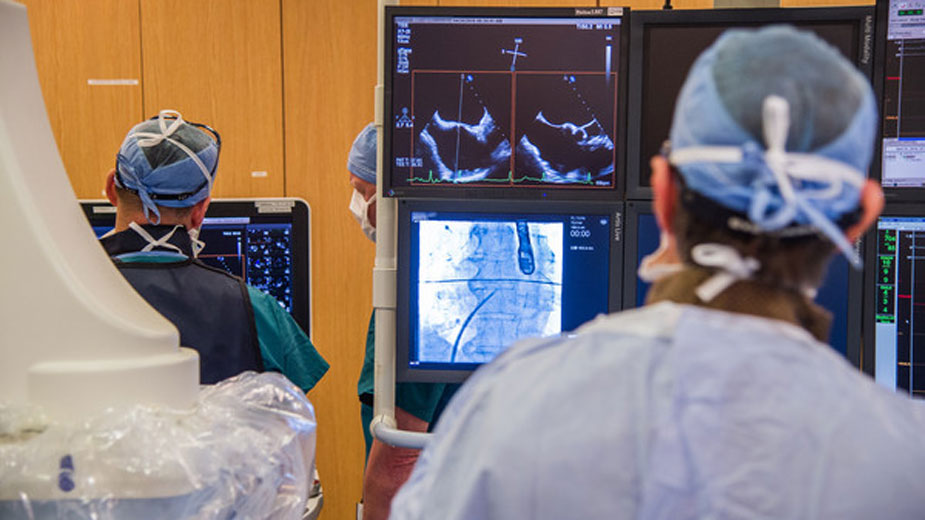Watchman Device Offers Option for Atrial Fib Patients
HERSHEY, Pa. – A new device and procedure now offered at Penn State Health Milton S. Hershey Medical Center may be an alternative to taking blood thinners for patients who have the most common form of atrial fibrillation – an irregular heart rhythm not caused by a heart valve problem.
Patients with atrial fibrillation often take blood thinners to reduce their risk of stroke. But blood thinners are not always tolerated long term due to increased bleeding risks with other medical conditions.
Last Spring, the Food & Drug Administration approved the Watchman device. Dr. Sarah Hussain, heart rhythm specialist, said most strokes happen when blood clots form in a pouch called the left atrial appendage and then enter the blood stream.
The Watchman device is placed at the opening to that pouch, preventing any blood clots that may form from leaving the heart and traveling elsewhere in the body, potentially causing a stroke. The device is like a plug that does not allow the clots to dislodge. Blood can flow through the screen, but not the clots. In March, the Hershey Medical Center became the first in the region to implant this FDA-approved device.
“In clinical trials, when they compared patients who got this device to those on blood thinners, there was a benefit in those that received the device,” said Dr. Soraya Samii, a heart rhythm specialist at Penn State Heart and Vascular Institute. “The group that received the device had less major bleeding long term and this led to a reduced risk of death.”
For those reasons, Samii said it’s reasonable for patients and providers to seek an alternative to long-term treatment with blood thinners, especially in those who have already shown a problem with bleeding or have a high risk of bleeding.
“Right now, we have identified patients we care for in our own practice who may have a pre-disposition to bleeding complications or have already demonstrated a problem with bleeding and could benefit from this device,” she said.
To implant the Watchman, doctors insert the device collapsed– think of a closed umbrella – through a catheter run from a leg vein to the left side of the heart. They puncture a small membrane and open the
“umbrella” of the device in the left atrial appendage (the pouch).
Hussain said the minimally-invasive procedure takes about two hours to perform in a cardiac catheterization lab, and most patients spend just one night in the hospital, returning home the following day.
Prior to the procedure, candidates must first have a trans-esophageal echocardiogram, an ultrasound of the heart and possibly a CT scan of the heart, to be sure that one of the five available device sizes will fit.
Those who get the Watchman implanted must continue to take blood thinning medications for about 45 days after the procedure. At that time, doctors will test to make sure the device is perfectly located and functioning correctly. If so, patients would continue on a different blood thinner for about four months as the device heals in place. After that, the patient would continue on only baby aspirin long term.
Although the device has only recently been approved for use in the United States, Hussain said it has about a decade of research and investigation behind it.
Currently the ideal patient is someone with a common atrial fibrillation not due to a heart valve problem, with risk factors for stroke that can tolerate blood thinners in the short term, but have either had difficulty or are at excessive risk while taking these blood thinners long term.
Pictured: An electrophysiology team at Penn State Health Milton S. Hershey Medical Center implants the Watchman device into a patient.
Source: Penn State news service; written by Jennifer Vogelsong.
Copyright 2024 The Business Journal, Youngstown, Ohio.



